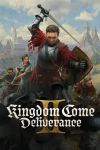›
LIVE NOW!
Conflict: Denied Ops - intervista con gli sviluppatori

In vista dell'uscita del nuovo FPS bellico Conflict: Denied Ops, atteso nei negozi questa settimana, Xbox Community Network ci ha fornito una intervista, Senior Designer del gioco in Pivotal Games. Si tratta di un articolo molto lungo ed in lingua inglese, ma gli appassionati del genere potranno trovarlo interessante soprattutto se indecisi sull'acquisto del titolo. Buona lettura.
XCN: Will the game feature a map editor?
James Nicholls: No, we’ve currently not got any plans to make our in-house map tools available externally.
XCN: Are there any playable vehicles in the game?
James Nicholls: Yes, we’ve got several playable vehicles in the game, all of which must be piloted co-operatively, as you’d expect. Our opening level features the BMP APC which you may have already seen, but in later levels you’ll get to commandeer other vehicles such as a tank and a hovercraft. With all of these vehicles, each of the Agents has a role: the first man in will be the driver and the second will be the gunner. If you are playing solo, then you can only aim the gun and pilot the vehicle when both personnel are aboard. If you disembark the vehicle, you can still give orders to the driver or gunner, allowing you to get them to give you covering fire or draw fire away from you.
XCN: Do you have any competitive Xbox LIVE modes planned and how many players will be able to take part in these modes?
James Nicholls: Yes, we’ve got 3 competitive multiplayer modes for up to 16 players. Deathmatch and Team Deathmatch are much as you’d expect, whilst Conquest requires you to work as a team to take and hold 5 flag capture points around the map.
XCN: How long will gamers need to complete the single-player campaign?
James Nicholls: It’s quite a tough one to gauge because you can play the game in a variety of ways, and if you’re moving up slowly and methodically, covering each other’s backs, you’ll take your time moving through the levels. Based on internal testing, we feel that around 12-14 hours is what most players will take to complete all missions. There’s also a great deal of incentive to replay missions in a different way, perhaps playing co-op if you played single player before, or perhaps to play a mission stealthily that you approached aggressively before. We’ve also got several achievements linked into completing the more advanced objectives in the level, so the Gamerscore addicts will want to hunt those down!
XCN: How does hot swap work and can you hot swap with a partner using co-op?
James Nicholls: When playing solo, you can swap between the Agents at any time at the touch of the B button. You’ll then see time slow down, and the camera will fly between the two Agents, wherever they are in the level. The camera actually flies along the AI routing paths, so it’s a really cool way of finding your way around the level or finding out where the other Agent is in relation to you. When playing co-operatively with a friend, either splitscreen or online, you choose your role at the start of the mission, in the lobby. You can change between missions or if you die and go back to the lobby, but generally speaking we’ve found that people will have their preferred character type which they tend to stick with.
XCN: I've heard the controls are mapped differently to other FPS, why did you choose to do it that way?
James Nicholls: I think it’s an exaggeration to say the controls are mapped differently to other FPS games – certainly if you’re used to playing using Halo’s controls, you’ll be instantly at home with Denied Ops’ control system. What we’ve aimed to do is mirror the controls on the shoulder button so that they logically reflect each other when you are issuing orders to your team mate. On the right side of the pad, the right shoulder button handles grenades and the right trigger fires your equipped weapon. On the left side of the pad, the left trigger handles the context-sensitive orders of your character (e.g. attack that enemy, open that door, go there, hack that computer terminal, etc) whilst the left shoulder button allows you to handle grenades and other advanced orders such as suppressive fire.
XCN: Which weapons are available?
James Nicholls: Graves sports a sniper rifle, which you can upgrade with a sound suppressor, shotgun attachment and gun camera (to allow them to look around corners). Lang’s weapon of choice is a light machine gun, which can be upgraded with a grenade launcher attachment, faster rate of fire and larger ammo clip. In addition to this, the two characters have access to various grenade types (frag, smoke, incendiary, proximity) silenced pistols and, in Lang’s case, a rocket launcher.
XCN: How much of the maps are destructible?
James Nicholls: In short: a lot! We worked into our levels over and over again with the idea of “if it looks destroyable, it should be” and we’re fairly happy that we’ve achieved that. A lot of players don’t initially realise how much of the level’s content they can destroy until they accidentally blow some things up, but normally once you get accustomed to the destruction systems, you enter an area and start surveying it for objects which can cause explosions, areas of cover which will last a hail of enemy bullets and so on. We’ve got 100s of physically-simulated objects in every level, most of which can be completely destroyed, and even if they are destroyed they remain in the level permanently – I could plough through a level, return to the very start and all the physics objects and ragdolls will still be where you left them. In addition to this, we have our newly-developed Puncture™ tech, which allows you to shoot arbitrary holes through thin surfaces such as wood, glass and plaster. This allows you to, for example, make a sniper hole to shoot through or surprise an enemy by blasting through a stud wall and flanking them. On top of that, we have big set pieces which are either triggered by off-map support arriving and blowing everything up, or by you hitting large explosive objects which set off a chain reaction, destroying even more of the level. Certainly the game really comes into its own once you start opening up with the explosions.
XCN: You are using quite an impressive physics engine for the game, how easy or hard was it to implement this, and do you think gamers are going to fully appreciate it?
James Nicholls: Our physics tech was actually created in-house, and whilst it took a little while to iron out the kinks, it’s allowed us to optimise it incredibly well. The coders did a lot of work to allow the physics objects to remain in the level no matter where you are, and there was also a significant amount of artwork needed to create all the props and define how they’ll break apart and make sure that the various physics objects behave believably. Whereas you might normally only expect a few physically modelled props in any one area in a lot of next-gen shooters, almost all of our props have physics models and destroyed versions, as well as all the sections of walls or vehicles that you can blow apart. The toughest part with all of this was getting the technology to work across a network for Xbox LIVE co-op play. It’s definitely been worth the effort though, as the physics is such a core part of the game. I think gamers will appreciate the physics system because it is so closely tied to the gameplay – it becomes pretty hard to resist tearing into an area once you get a taste for the destruction technologies!
XCN: It's easy to say that Conflict: Denied Ops is just another military shooter in a crowded genre on the Xbox 360. What features will make the game stand out from similar military themed titles like Battlefield 2 and forthcoming games like Frontlines Fuel of War?
James Nicholls: I think compared to the two titles mentioned; our focus is very much on providing a strong single player and co-operative experience compared to those being much more about multiplayer. In general, we’ve got many things that make the game stand out, but some of the key ones are the co-op nature of the FPS, the destruction tech and the tactical action nature of the gameplay. It’s hard to overstate how much fun playing co-operatively with a trusted ally can be, and unlike many games, which offer co-op as an add-on, or additional mode, the whole game is constructed around this kind of play. Even when playing solo, you can set up some really fantastic flanking moves and tactics by switching characters and getting them into good positions. The destruction tech is one of those things that remains fun even when you’ve played the game through as many times as we have in-house – setting off chain reactions and ambushing enemies with explosive items is always spectacular, and the explosions feel very satisfying. I think what’s very hard to convey via screenshots is how different the gameplay feels to a regular FPS -you always have your partner available to issue orders to and set up flanking positions, and as such you are always improvising tactics on the fly and trying to get the upper hand on the AI. The fact that you and your partner can go anywhere you can get to in the level at any time, that destruction tech is entirely persistent and that you can destroy pretty much anything which looks destroyable are the kinds of things that only really dawn on you when you’re playing the game.
XCN: Conflict Denied Ops will be the first "Conflict" game on Xbox 360; after reasonable success on the Xbox platform, from a development standpoint, how easy or hard has the transition to Xbox 360 been?
James Nicholls: Considering this is our first ‘next-gen’ outing, we’ve adapted to the Xbox360 pretty quickly. One of the reasons for this is we have an experienced and talented team of programmers who have consistently been working & developing up our own technology and tool set internally over the last 5 products. As a result of this we were able to get the game up and running fairly quickly and from there on it was a case of profiling the game and exploring all the additional power that the Xbox360 offers. For example Conflict Denied Ops makes full use of the multiple cores in the Xenon CPU, with puncture tech, AI and physics all capable of running on separate cores.
As well as more interactivity & game content, obviously there’s a lot more power there to render more things at once. Rather than simply pumping the number of enemies up though, we’ve opted to spend most of that extra power on physics and special effects. We’ve also been able to open up our environments which means that we’ve now got a nice mix of indoor close combat and outdoor open areas, suitable for vehicular combat.
One bounded around stat is that we’ve got more polys in one of the first person guns now than we had in all 4 squad members in the original Desert Storm, so I guess that’s a measure of how far things have come.
As well as more interactivity & game content, obviously there’s a lot more power there to render more things at once. Rather than simply pumping the number of enemies up though, we’ve opted to spend most of that extra power on physics and special effects. We’ve also been able to open up our environments which means that we’ve now got a nice mix of indoor close combat and outdoor open areas, suitable for vehicular combat.
One bounded around stat is that we’ve got more polys in one of the first person guns now than we had in all 4 squad members in the original Desert Storm, so I guess that’s a measure of how far things have come.
XCN: Can you tell us a little about the story behind the game, what war are we fighting, when and why?
James Nicholls: At the start of the game you are made aware of a military coup within Venezuela. The coup, led by a General Ramirez, brings civil war to Venezuela and causes a large number of civilian casualties. However, as a US-led UN intervention begins, Ramirez surprises everyone by threatening to use a nuclear deterrent that no-one was aware he possessed.
Unable to risk direct military intervention, the CIA’s Special Activities Division is called upon to intervene in missions which can be completely denied by the US government. Graves and Lang are initially sent deep into Venezuela on their own to find evidence of where Ramirez’s nuclear weapons are, and where they have come from. Upon uncovering these leads, they both embark on a race against time to track down where the nuclear arms are coming from, and shut the operation down.
Unable to risk direct military intervention, the CIA’s Special Activities Division is called upon to intervene in missions which can be completely denied by the US government. Graves and Lang are initially sent deep into Venezuela on their own to find evidence of where Ramirez’s nuclear weapons are, and where they have come from. Upon uncovering these leads, they both embark on a race against time to track down where the nuclear arms are coming from, and shut the operation down.
XCN: Can you give us an insight into the game's characters? Who is your favourite and why?
James Nicholls: The characters are members of the Special Activities Division, which is a detached branch of the CIA that the US government officially denies all knowledge of. Therefore the agents are freed from the regular constraints of military rules of engagement, but this comes at the price of being on their own – if they go missing in action, no one is coming to rescue them, and the US government will deny all knowledge of their existence. As such they are highly trained in all areas of warfare, which has allowed us to create 2 distinct characters with unique skill sets and opposing personalities!
Graves is a grizzled veteran with a frosty personality. He is a superb sniper and is both quick and light on his feet making him ideal for close combat stealth kills. He is also an explosives expert.
Lang is a fierce patriot and heavy weapons expert. His awesome combat weaponry and aggressive gung-ho nature makes him a perfect match with Agent Graves, tactically, and a source of constant exasperation for Graves, personally. Although his movement is slower & noisier, he is much tougher allowing him to take more damage in a fire-fight.
In both focus testing and internal testing both characters were evenly matched in terms of preference & there was no distinct favourite. We found that although players usually had their initial favourite, their character preference tended to alter depending from level to level, depending on the openness of the level, whether it was being played loud or stealthily and on what equipment & weapon upgrades were unlocked.
Graves is a grizzled veteran with a frosty personality. He is a superb sniper and is both quick and light on his feet making him ideal for close combat stealth kills. He is also an explosives expert.
Lang is a fierce patriot and heavy weapons expert. His awesome combat weaponry and aggressive gung-ho nature makes him a perfect match with Agent Graves, tactically, and a source of constant exasperation for Graves, personally. Although his movement is slower & noisier, he is much tougher allowing him to take more damage in a fire-fight.
In both focus testing and internal testing both characters were evenly matched in terms of preference & there was no distinct favourite. We found that although players usually had their initial favourite, their character preference tended to alter depending from level to level, depending on the openness of the level, whether it was being played loud or stealthily and on what equipment & weapon upgrades were unlocked.
XCN: Could you tell us about your destructible environments and Puncture Technology and how they will affect gameplay?
James Nicholls: In Conflict: Denied Ops, if it looks like it can be blown up, it probably can! 1000s of objects, ranging from wooden crates, fuel tanks and trucks, all the way up to helicopters, fighter jets and tanks are all waiting to be blown to pieces. Better still, the custom-made Puncture technology allows you to create sniper holes and take out enemies through thin surfaces such as glass, wood and plaster.
Gameplay and immersion-wise, it’s certainly something you pick up on once you sit down to play the game. You stop thinking about “can I shoot this?” and start to instinctively shoot at objects which look as if they should be destroyed. It really alters the way you approach combat situations. For example, if I come over the brow of a hill and see 3 guards beneath me, stood next to their vehicle, I can spend 3 sniper rounds taking them all out with a headshot, and risk one of them getting to the alarm, or I can pump one round into the fuel tank of the truck they’re stood next to, and blow them all up or set them on fire. The more you play, the more you start looking to use the environment around you to your advantage – can I blow up that object next to that enemy? Can I shoot through the cover which that enemy is hiding behind?
Set-piece wise, I don’t want to give too much away, but within the first mission there are several – right at the start of the game, a friendly Apache takes out an enemy Hind, and in doing so knocks out a communications tower, which crashes into the level. Later on you’ll see that same Apache dodging surface to air rocket fire, and decimating the tower that his would-be assailant launched the rocket from. This type of set piece moment is common throughout the level, and many of these set pieces only occur if events have unfolded in a particular way during the mission.
In terms of special effects, we’re very proud of our explosions and pyrotechnics. There’s nothing like pumping a grenade launcher round into an area full of enemy forces, and setting off a chain of massive explosions, seeing the guys running around on fire or blown outwards by the blast. The smoke following these explosions will linger on the battlefield, adding to the effect. We’ve also spent a lot of time on our ordinance impact effects, ensuring that each type of surface has its own particle effect and bullet “decal” type.
In relation to the story, the destruction serves to underline that these operatives are a law unto themselves – they don’t need permission to “go loud” – if they want to level everything in the surrounding area, that’s up to them – there’s no comeback to the US government.
Gameplay and immersion-wise, it’s certainly something you pick up on once you sit down to play the game. You stop thinking about “can I shoot this?” and start to instinctively shoot at objects which look as if they should be destroyed. It really alters the way you approach combat situations. For example, if I come over the brow of a hill and see 3 guards beneath me, stood next to their vehicle, I can spend 3 sniper rounds taking them all out with a headshot, and risk one of them getting to the alarm, or I can pump one round into the fuel tank of the truck they’re stood next to, and blow them all up or set them on fire. The more you play, the more you start looking to use the environment around you to your advantage – can I blow up that object next to that enemy? Can I shoot through the cover which that enemy is hiding behind?
Set-piece wise, I don’t want to give too much away, but within the first mission there are several – right at the start of the game, a friendly Apache takes out an enemy Hind, and in doing so knocks out a communications tower, which crashes into the level. Later on you’ll see that same Apache dodging surface to air rocket fire, and decimating the tower that his would-be assailant launched the rocket from. This type of set piece moment is common throughout the level, and many of these set pieces only occur if events have unfolded in a particular way during the mission.
In terms of special effects, we’re very proud of our explosions and pyrotechnics. There’s nothing like pumping a grenade launcher round into an area full of enemy forces, and setting off a chain of massive explosions, seeing the guys running around on fire or blown outwards by the blast. The smoke following these explosions will linger on the battlefield, adding to the effect. We’ve also spent a lot of time on our ordinance impact effects, ensuring that each type of surface has its own particle effect and bullet “decal” type.
In relation to the story, the destruction serves to underline that these operatives are a law unto themselves – they don’t need permission to “go loud” – if they want to level everything in the surrounding area, that’s up to them – there’s no comeback to the US government.
XCN: Denied Ops has an interesting approach to the Campaign mode. Please tell us how your Flexible Mission Flow works and how it will affect the way players progress through the campaign.
James Nicholls: The Flexible Mission Flow allows players total freedom to decide their route through the game’s campaign story, in both co-op and solo play. After the first mission is completed, three separate branches to the story are opened up each following a separate line of investigation, and these will be explained on the “Geosphere” screen, with summary briefings for the missions ahead. You can play these missions in any order you see fit, and the difficulty will dynamically adjust after you complete a mission ensuring a consistent level of challenge whatever order the missions are approached in. Upon completing missions, you will unlock new equipment such as grenade launchers, shotgun attachments, new grenade types and gun cameras. If you are stuck on one particular mission, you can try another mission and return with upgraded weapons.
Each of the lines of investigation can be followed to their conclusion before the final missions set within Venezuela.
Each of the lines of investigation can be followed to their conclusion before the final missions set within Venezuela.
XCN: You’re promising players a variety of strategic options for how they can take on missions. Could you elaborate on this and perhaps offer some examples of different ways we’ll be able to approach the same mission or obstacle?
James Nicholls: The key to Conflict Denied Ops’ combat lies in creating crossfire situations and flanking the enemy. There are numerous opportunities to do this throughout the game, with most levels featuring two routes into skirmish situations, or open spaces that allow flanking to be effective.
Players are also actively encouraged to complete the levels in a number of different ways, exploring stealthy approaches and alternate routes through the level, and often these different and more challenging objectives are rewarded with Achievements.
By reducing the complexity of the controls, so you can change characters and issue all of your orders via a single button press, the ability to issue and change gameplay tactics is quicker and easier than ever before. For example, you can issue advanced orders such as Lang laying down suppressive fire on a specified location to pin down an enemy & give you valuable time to pick off your shots or simply take the heat off you for a few seconds. Similarly you can task Graves with covering a specified location so he will automatically fire on any enemies entering that area, but will not lay down suppressive fire. This is a very effective order for getting Graves to provide you with cover down one flank, or guarding against snipers when playing as Lang
The game really does come to life in two-player co-op, mainly due to the fluidity of the tactics you can adopt with a second player. Covering each other’s advances, timing assaults with co-ordinated grenade hits, and covering each other’s backs as AI flanks you is where the game’s core appeal lies, and is what will keep the game enjoyable to play over and over.
This all serves to create a slicker style of gameplay, whilst still providing an unmistakably Conflict style of gameplay.
Players are also actively encouraged to complete the levels in a number of different ways, exploring stealthy approaches and alternate routes through the level, and often these different and more challenging objectives are rewarded with Achievements.
By reducing the complexity of the controls, so you can change characters and issue all of your orders via a single button press, the ability to issue and change gameplay tactics is quicker and easier than ever before. For example, you can issue advanced orders such as Lang laying down suppressive fire on a specified location to pin down an enemy & give you valuable time to pick off your shots or simply take the heat off you for a few seconds. Similarly you can task Graves with covering a specified location so he will automatically fire on any enemies entering that area, but will not lay down suppressive fire. This is a very effective order for getting Graves to provide you with cover down one flank, or guarding against snipers when playing as Lang
The game really does come to life in two-player co-op, mainly due to the fluidity of the tactics you can adopt with a second player. Covering each other’s advances, timing assaults with co-ordinated grenade hits, and covering each other’s backs as AI flanks you is where the game’s core appeal lies, and is what will keep the game enjoyable to play over and over.
This all serves to create a slicker style of gameplay, whilst still providing an unmistakably Conflict style of gameplay.
XCN: You’ve also talked about how Denied Ops’ controls have been streamlined to accommodate gamers of all levels. Why have you gone to this effort, and how much work was it?
James Nicholls: We made the decision to make a co-op FPS that retained the series’ trademark action / strategy gameplay whilst being much more accessible to players of all experiences fairly early on, so whilst it was a considerable amount of work it was something that was well planned for. Gameplay-wise, the decision to only have two characters and the decision to do a Conflict title as an FPS are closely linked – we’re trying to make the gameplay as immediate and accessible as possible. It would be slightly more complex ordering four characters around in first person than it would be in 3rd person, and the visual impact of some of the new technologies, such as the Puncture technology would be reduced in 3rd person.
The buddy AI is a unique system, and is built to be extremely flexible. It has to cope with the fact that you can play as either character - at any time - in single player and must fulfil the role of either sniper or heavy weapons depending on which character you’ve chosen to play. Furthermore, your buddy mustn’t get in your way or restrict you in any way. At the end of the day, he’s a tool at your disposal, and with this game being all about accessibility to gamers of all levels, we don’t want to force you to learn complex squad commands and micro-manage your buddy. As such, your buddy will intelligently follow you around and fend for himself, and will follow your lead for which weapon to use and what strategy to employ.
Fans of the series will find that its hallmark tactical gameplay is still there. Both characters have clearly-defined roles to play, as with the other Conflict titles, and using both to their full strengths, establishing overlapping fire cones and outflanking the enemy is what makes the game immensely enjoyable. We’ve worked really hard to make sure that you are never playing Quartermaster as they have had to in past iterations of the series, and we’ve achieved this by greatly reducing the amount of inventory management you do. You have infinite bullets, your health recharges automatically, and you can heal a downed team-mate at the touch of a button. This keeps you playing the game, and saves you having to hunt around the level for ammunition and supplies.
The buddy AI is a unique system, and is built to be extremely flexible. It has to cope with the fact that you can play as either character - at any time - in single player and must fulfil the role of either sniper or heavy weapons depending on which character you’ve chosen to play. Furthermore, your buddy mustn’t get in your way or restrict you in any way. At the end of the day, he’s a tool at your disposal, and with this game being all about accessibility to gamers of all levels, we don’t want to force you to learn complex squad commands and micro-manage your buddy. As such, your buddy will intelligently follow you around and fend for himself, and will follow your lead for which weapon to use and what strategy to employ.
Fans of the series will find that its hallmark tactical gameplay is still there. Both characters have clearly-defined roles to play, as with the other Conflict titles, and using both to their full strengths, establishing overlapping fire cones and outflanking the enemy is what makes the game immensely enjoyable. We’ve worked really hard to make sure that you are never playing Quartermaster as they have had to in past iterations of the series, and we’ve achieved this by greatly reducing the amount of inventory management you do. You have infinite bullets, your health recharges automatically, and you can heal a downed team-mate at the touch of a button. This keeps you playing the game, and saves you having to hunt around the level for ammunition and supplies.
XCN: Do you have plans for downloadable Denied Ops content, and perhaps a demo available through Xbox LIVE Marketplace?
James Nicholls: Yes we have both a downloadable demo as well as additional downloadable content which will be available on the games release.
XCN: Is Denied Ops the start of a new era in the Conflict series? When is the next Conflict sparking off?
James Nicholls: The Conflict series has a solid fan base since the original Desert Storm, and I think regular players will recognise that the mix of action and squad strategy has always been the defining factor in the way the games play, and that you can apply that formula to a number of different combat scenarios. We’ve always grounded the series in real-world combat zones and events, and made sure that the realistic “feel” is conveyed through the equipment and mission structure, although our games have never been simulations.
As such, we look at how to take that action / strategy blend and use it in a different way on successive titles. For this title, we wanted to greatly improve the accessibility and eliminate any of the inventory and micro-management frustrations which were creeping in over the course of several games, and that has really shaped this entry in the series, with two new characters that are part of a deniable arm of the CIA, rather than Special Forces personnel.
With regards to the next in the Conflict series, we now have the technology to use 1st or 3rd person camera systems as well as 2 or 4 man teams, and plans are already underway so watch this space!
As such, we look at how to take that action / strategy blend and use it in a different way on successive titles. For this title, we wanted to greatly improve the accessibility and eliminate any of the inventory and micro-management frustrations which were creeping in over the course of several games, and that has really shaped this entry in the series, with two new characters that are part of a deniable arm of the CIA, rather than Special Forces personnel.
With regards to the next in the Conflict series, we now have the technology to use 1st or 3rd person camera systems as well as 2 or 4 man teams, and plans are already underway so watch this space!
MX Video - Conflict: Denied Ops
›
 Offerte in evidenza
Offerte in evidenza
-
€ 23.83 invece di 79.99
-
€ 29.99 invece di 59.99
-
€ 40.99 invece di 81.00
-
€ 42.89 invece di 79.99
-
€ 64.99 invece di 79.99
-
€ 65.24 invece di 74.99
-
€ 69.99 invece di 79.99
-
€ 43.81 invece di 49.99
-
€ 73.01 invece di 80.98
-
€ 65.99 invece di 71.00






 Offerte in evidenza
Offerte in evidenza











Commenti